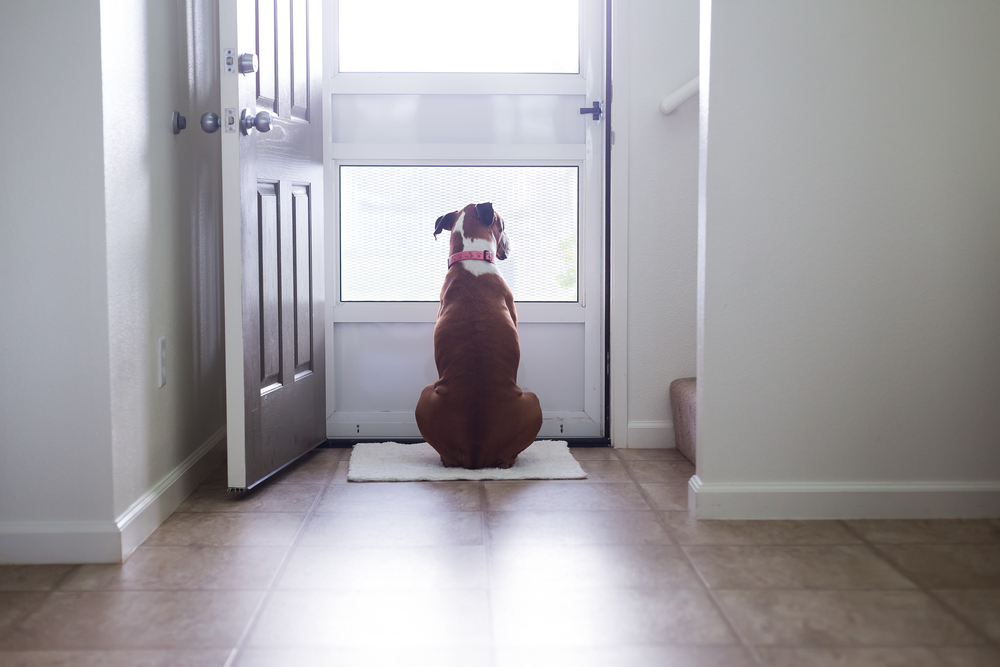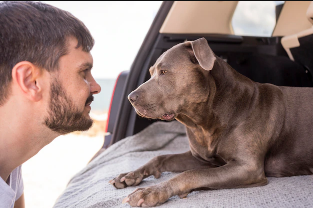How to build engagement in your daily routine
Why doesn’t your dog listen to you? Short answer – you don’t speak the same language.
Everyone has had a dog that will willingly blow them off in the presence of the slightest distraction. (SQUIRREL?!!?) It can be very frustrating, embarrassing, and also very dangerous. Until you have taught your dog a clear form of communication, it is unfair to assume that they are willingly disobeying you (“You stupid dog, why won’t you come in the house from the backyard?”) Odds are they’re either confused, distracted or disinterested. All three can create problems if you don’t know how to remedy them.
Let’s start with your dog being disinterested. Ask any high school math teacher and she’ll tell you how difficult it can be to teach a classroom full of distracted students. One of the many skills a teacher must have is being able to engage her students in learning. Without engagement – her kids aren’t listening. Which means they aren’t learning. Without engagement – your dog isn’t listening and they’re certainly not learning. Work on your engagement and the learning will follow.
How to build engagement in your daily routine:
Door Manners
This helps all dogs with impulse control as it forces them to slow down before bolting out of the door for a walk. Building engagement on the inside of the house can lead to a more engaged dog on the walk. Thresholds are points of arousal for our dogs, so by controlling how and when our dogs pass through these thresholds, we clearly show them the correct state of mind that will get them what they want (to be outside). It’s easy – you have to leave the house at least 2x a day, so add some structure, add some patience and say goodbye to being sled-dogged out of the front door every morning by a dog who doesn’t even know you’re attached to the leash.

How to : Make your dog sit for at least 3 seconds on the inside of the door every time you leave the house to go for a walk or go potty. All doors count (garage, front, back, side, kennel, car, patio etc).
Bonus Points – Once you can manage 3 seconds of patience at the door, start to wait your dog out until they make direct eye contact with you. As SOON as they make eye contact with you, say your release word and walk through the door. This builds ‘permission-based obedience’ which teaches your dog to check in with you for direction or permission.
Pro Tip – Build duration as your dog builds success. Start with 3 seconds. Then 6. Then 10. Then 30. Then 5 minutes. Crawl before you walk before you run. You’ll be surprised how automatic this command will become in a month’s time if you are 100% strict with door manners. Use a leash always. Leash = control.
Food Manners
Similar to door manners in the sense it should be practiced every day, should build engagement and should encourage your dog to engage with you to earn a reward.

How To: Before you put your dog’s food bowl down, have them sit or stay a few feet away from where the bowl will be placed down. If, as you’re setting the bowl down, your dog pops up from his sit, pick the bowl back up and make him sit again. If you need to use a leash at first to enforce your commands that is ok. If you need to recruit your daughter or spouse to help with this exercise at first, that’s not cheating either. Rinse and repeat the above steps until you get at least 3 seconds sitting before releasing your dog to eat.
Bonus Points– Try it with a tennis ball. Or their favorite blanket, or the toy she can’t live without. Maybe a squeaker toy?!?! Don’t dare try it with the Ring Doorbell!! <kidding>. Of course do that too! The more control you have over your dog’s impulses, the more you control their behavior.
Pro Tip – Use a release command (some examples are FREE or OK or BREAK or CHOW TIME or NUMM NUMM’s)…whatever you want. Just be 100% consistent 100% of the time. Say this word when YOU are ready to allow your dog to eat.
Watch Command
If taught properly and proofed out through repetition this command can be used to get your dog’s immediate attention through eye contact. The reason I like this command (more so for the engagement piece versus the redirection piece) is because a dog that is staring at you is literally engaged with you. With that focus and attention, you can do A LOT with your dog. Without their attention…good luck.

How To: NOTE//Your dog should have some level of sit/stay proficiency before teaching this command. Struggling with your dog’s sit/stay? There are two drills listed above that are 100% going to help your dog stay in their sit command (daily door and food manner drills).
Put your dog in a sit (use a leash if you need control, even if indoors). Have their breakfast or dinner kibble in your pants or hoodie pocket and feed your dog every time they make direct, intentional eye contact with you. Baby steps at first and pay for ‘close-calls’ if your dog is struggling to understand the game.
Bonus Points – If you feel your dog is getting the idea that “eye contact = food reward”, then you can start to up the ante. Keep your dog in a sit (maybe on a place cot or their dog bed – I prefer something elevated for this drill) put equal parts of their kibble in both your L and R hand. Extend your arms out to the side like a scarecrow. This will naturally draw your dog’s eyes to your outstretched hands, keep them there and as SOON as their eyes leave your hand and make eye contact with you, reward with food (you can hand feed or throw a few pieces into their bowl – I prefer hand feeding so I can keep them sitting).
Pro Tip – After a week or so your dog should be showing signs of intentional eye contact. Now as you continue to work this drill, say the word YES! The second your dog makes eye contact with you. This is adding a ‘verbal marker’. Markers ‘mark’ the behavior and signal to the dog that what they did that very second, was exactly what we’re teaching them. Within 2 seconds of the YES! There has to be a reward (food) for them to link the behavior to the reward. If you begin to ‘marker train’ your dog through this exercise, you can do anything from teaching a dog to dance to fetching a beer from the fridge, all with a VERY well-timed YES!! ( Search YouTube : “Chicken Clicker Training” to see the true power of marker training).
Proofing – Now try this in a different part of the house, or maybe a very boring part of the walk. Minimize distractions until your dog can handle it. No need to rush engagement because remember, without it… you got nothing. Crawl. Walk. Run.
Stay tuned for Volume 2 next Tuesday!
Thank you for training your dog.
Craig Martin
Pup Scouts Dog Trainer

